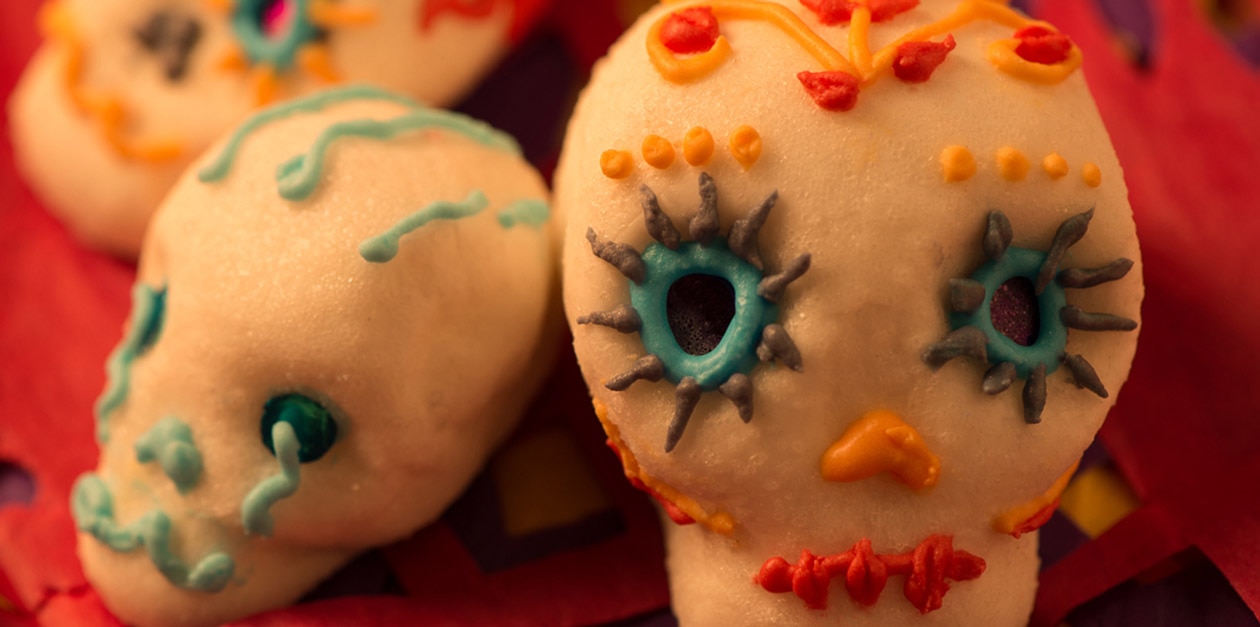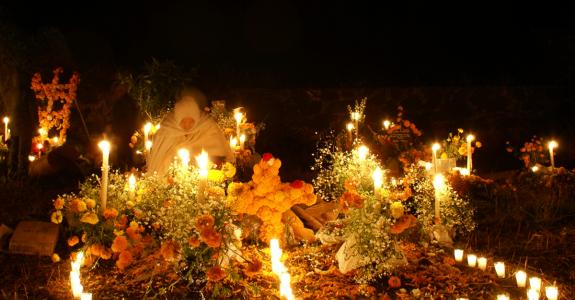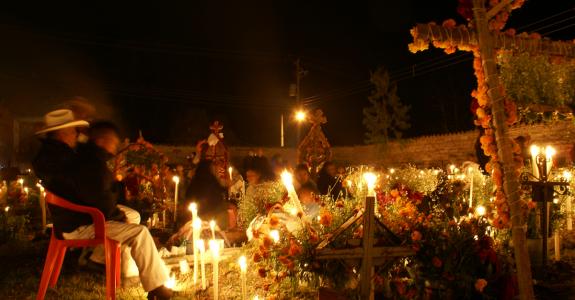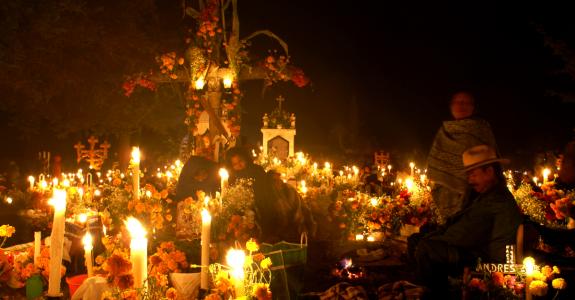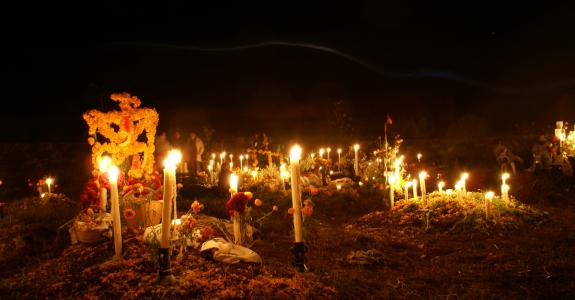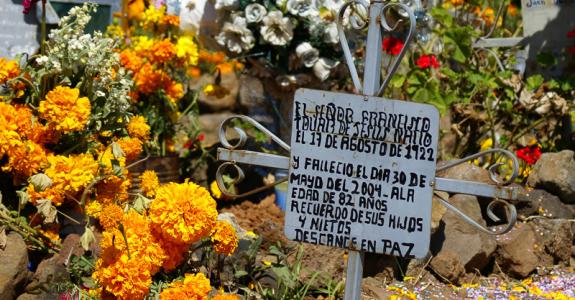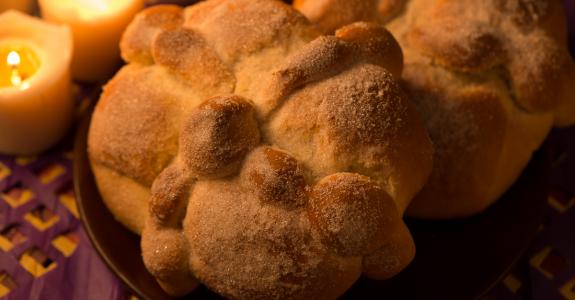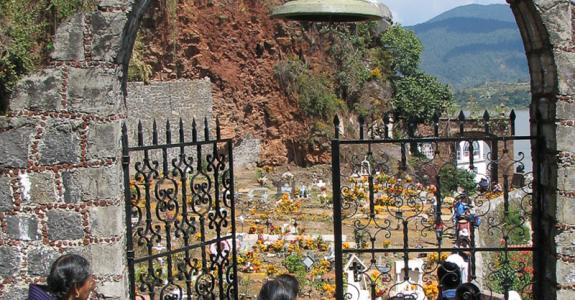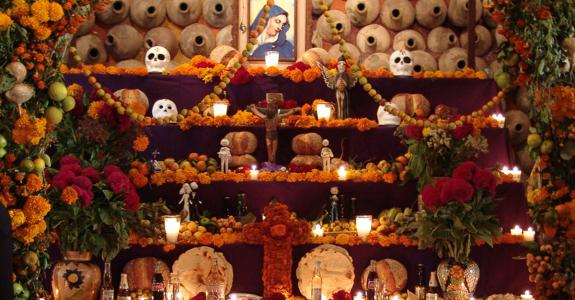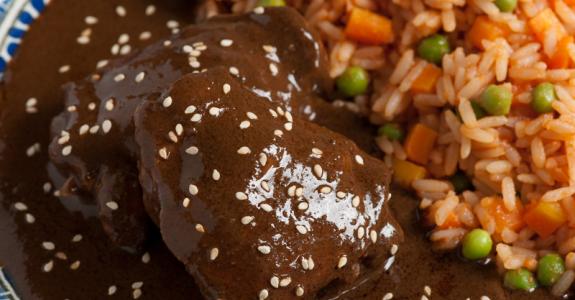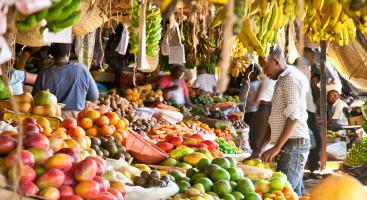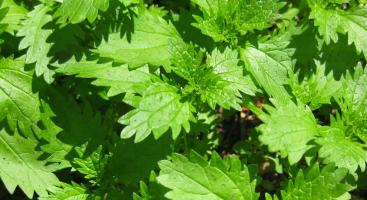Dia de los Muertos
In Mexico, death isn't frightening: it's a natural, inevitable process. "A Mexican is familiar with death, jokes about it, caresses it, sleeps with it and celebrates it; it is one of his favourite toys and his most steadfast love."(1) Every year, Mexicans celebrate the Day of the Dead, honouring their deceased with a profusion of traditional dishes.
The Day of the Dead – el Día de los Muertos – is an emblematic Mexican celebration, which may seem both fascinating and disconcerting for Europeans. While death is often taboo in our culture, in Mexico it's an integral part of life and a recurring theme in popular culture. Thus, rather than being morbid and sad, the Day of the Dead is always joyous and colourful.
The cult of the dead has been profoundly anchored in Mexican culture for nearly three thousand years. For numerous pre-Columbian peoples, life and death were intimately related and represented two complementary, inseparable poles of human existence and Creation.
An ancient Aztec rite
It was an ancient Aztec rite that gave birth to the current festival of the dead(2). The ceremonies honouring the dead coincided with the end of the maize, pumpkin and bean harvest, resulting in huge banquets shared among everyone, whether living or dead. The conquistador Bernal Díaz del Castillo(3) described the festival as a mosaic of colours and tastes.
When the Spanish conquistadors first set foot in Mexico, they were appalled by these barbaric, primitive practices. To convert and subdue the native people, they changed the date of the festivities so that they would coincide with All Saints’ Day and the Day of the Dead in November. There then started a long process of cultural merging, during which Catholic customs gradually blended with pre-Hispanic rites. Today, Mexicans continue to honour the souls of the dead, who join the world of the living to party with them from 31 October to 2 November.
With the dead, from home to the cemetery
A few days before the festivities commence, the Mexicans start communing symbolically with the dead by eating el pan de muerto – the bread of the dead – baked in honour of the departed. The bread is based on a yeast-based dough and is often sweet. Depending on the region, it may be shaped as a flower, an animal, a cross or a skeleton. In the capital city, it is often round, decorated with bone shapes and sprinkled with icing sugar.
Market stalls are decked with skulls made of sugar, amaranth, pumpkin seeds or chocolate. Sweet skulls are a veritable icon of these festivities: you write the name of the deceased or the friend you wish to give them to and you crunch on them with cynicism and derision, as if you were crunching on your own death.
In their homes, Mexicans erect altars in honour of the deceased and set out offerings of a selection of objects and food that the deceased used to enjoy: toys and sweets for a child; beer, tequila or tobacco for an adult. They don't forget to include a glass of water to quench the soul's thirst after his long journey from the beyond and a little pile of salt to purify it.
At the end of October, it's time to clean the tombs and decorate them with a profusion of golden French marigolds and amaranth flowers. Finally, on the evening of 1 November, all the family goes to the cemetery, where they light countless candles and burn copal – a semi-fossil resin – to guide the souls of the dead and place baskets of food on every tomb. Mexicans spend the whole night there, with contrasting emotions ranging from contemplation and solemnity to the joy of reunion. Together, the dead and the living drink, eat, talk and sing.
‘Buried chicken’ and other festival dishes
The Day of the Dead, like many events in Mexico, gives pride of place to festival food. The celebrations vary from region to region and some dishes are specially cooked for consumption during this festival. For example, the people of the Yucatán make "Muc Bil Pollo", which is literally "buried chicken". The dish is based on maize, chicken and pork and is slow cooked in an oven dug into the ground the day before the Day of the Dead.
However, many of the recipes served up during these festivities are the great traditional dishes in the Mexican repertoire, that is, family dishes, as they are selected based on the preferences of the deceased, while they were still alive. Tamales, small maize rolls, are more or less obligatory and were even present, in a slightly different form, during pre-Hispanic rites. Nowadays, there are countless tamales recipes: they may be sweet or savoury, stuffed or plain, served hot in a corn husk or a banana leaf. Mole, a meat stew in a sauce with pre-Columbian origins, is another emblematic dish served up for this occasion. Its name comes from mulli, which means sauce in nahuatl. The best known mole outside Mexico is undoubtedly the mole poblano, because it contains several grammes of chocolate. This dish was created by nuns in Puebla during the 17th century.
Whatever dishes are eaten on the Dia de los Muertos, they are always both sacred and profane. They are food for the body, but above all food for the soul, of both the living and the dead.



